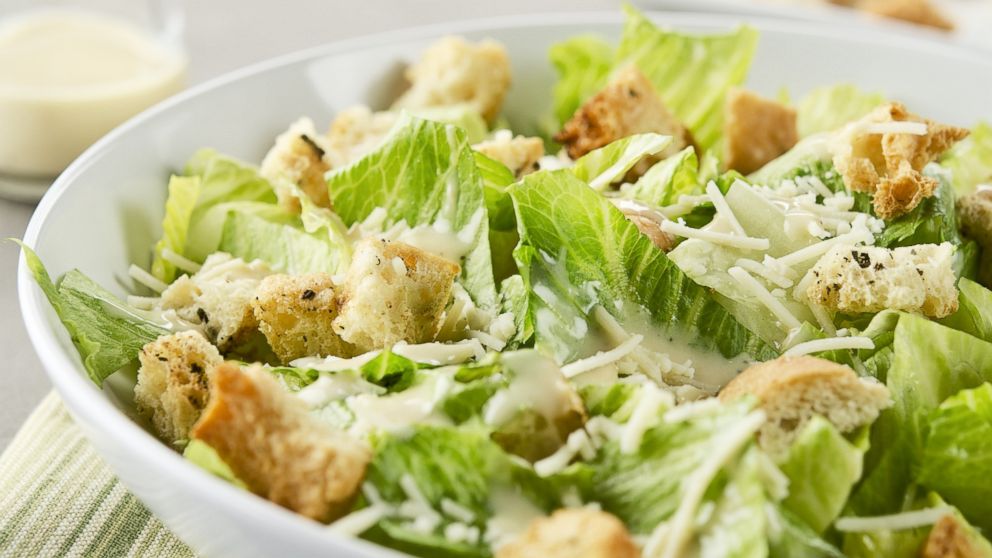5 Ways Salads Are Making You Fat
Get your greens without packing on the pounds.

Feb. 26, 2014— -- intro: Eating a salad is kind of like going to the gym: you feel better about yourself after you've done it, but finding the motivation to make it happen can be a challenge. (And unlike the gym, there are no hot, spandexed personal trainers to flirt with at the salad bar.)
But while doing research for "Eat It to Beat It!" I found that motivation may not be the biggest challenge. Instead, it's choosing the right ingredients.
Commit these five belly-busting salad sins, and you'll be left with no choice but to hit the treadmill.
quicklist: 1category: How Salads Are Making You Fattitle: You Load It With Dried Fruiturl:text: Dried fruit can certainly add texture and fiber to a salad, but in many cases, it might as well be candy. Just a quarter cup of dried cranberries -- a handful -- can have as much as 29 grams of sugar. And it's not all coming from the naturally sweet fruit; a full cup of fresh cranberries has a mere 4 grams of natural sugar.
Beat It!
Check ingredient lists on dried fruits for sugar and its aliases, or opt for a small portion of fresh fruit instead.
quicklist: 2category: How Salads Are Making You Fattitle: You Drown It in Dressingurl:text: Many a healthy salad has died by dressing drowning. It's a shame, because a little fat is actually a good thing. As little as 3 grams of monounsaturated fat can help the body's ability to absorb nutrients from vegetables, according to a Purdue University study. But your average 2-tablespoon serving packs way more fat than that: about 12 grams, and 120 calories.
Beat It!
Always ask for olive-oil based vinaigrette on the side when dining out, and measure a scant tablespoon for your greens.
quicklist: 3category: How Salads Are Making You Fattitle: You Don't Go Easy on the Cheeseyurl:text: Cheese can add creamy, salty bite to a bowl of blasé greens, plus calcium and protein to boot. But most full-fat varieties are high in saturated fat. A standard serving of cheese, at about 1.5 ounces, is roughly the size of a pair of dice (I know, tiny), and will add about 150 calories and 15 grams of fat to your salad.
Beat It!
Stick to an ounce or less of the stinkiest cheese you can handle. Although higher in fat, strong varieties like goat cheese and blue cheese will pack more of a flavor punch than, say, pizza cheese, which means you need less.
quicklist: 4category: How Salads Are Making You Fattitle: You Get Crunchy With Croutonsurl:text: Crunchy, airy, delicious and, more often than not, completely devoid of any fiber or whole grain goodness, croutons are an easy way to add empty calories to your veggie plate. Just six little cubes pack about 30 calories and 75 milligrams of sodium. And who has just six? More like 16, which would set you back some 80 calories and 200 milligrams of sodium.
Beat It!
If you're serious about adding crunch to your salad, and don't mind a bit of a calorie bump, opt for a scant spoonful of flaked almonds or sunflower seeds.
quicklist: 5category: How Salads Are Making You Fattitle: You Fry Your Proteinurl:text: I don't think it's ever a bad idea to add lean, filling protein to a meal. But while a 4-ounce serving of skinless chicken breast provides more than 20 grams of protein and less than 5 grams of fat, the same portion, breaded, packs a whopping 17 grams of fat, mostly saturated. You may as well have ordered a cheeseburger.
Beat It!
Go grilled, always. Vegetarian? Low-fat cottage cheese or a hard-boiled egg can be great protein sources.
Dave Zinczenko, ABC News nutrition and wellness editor, is a No. 1 New York Times bestselling author. His latest book, "Eat It to Beat It!" is full of food swaps, meal plans and the latest food controversies. Here's where to sign up for his free newsletter.